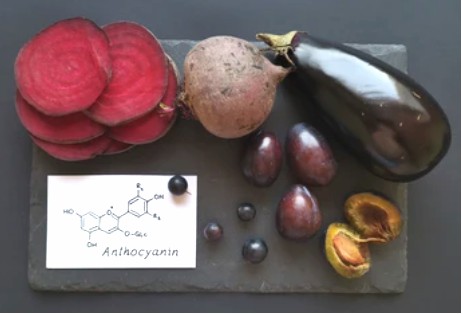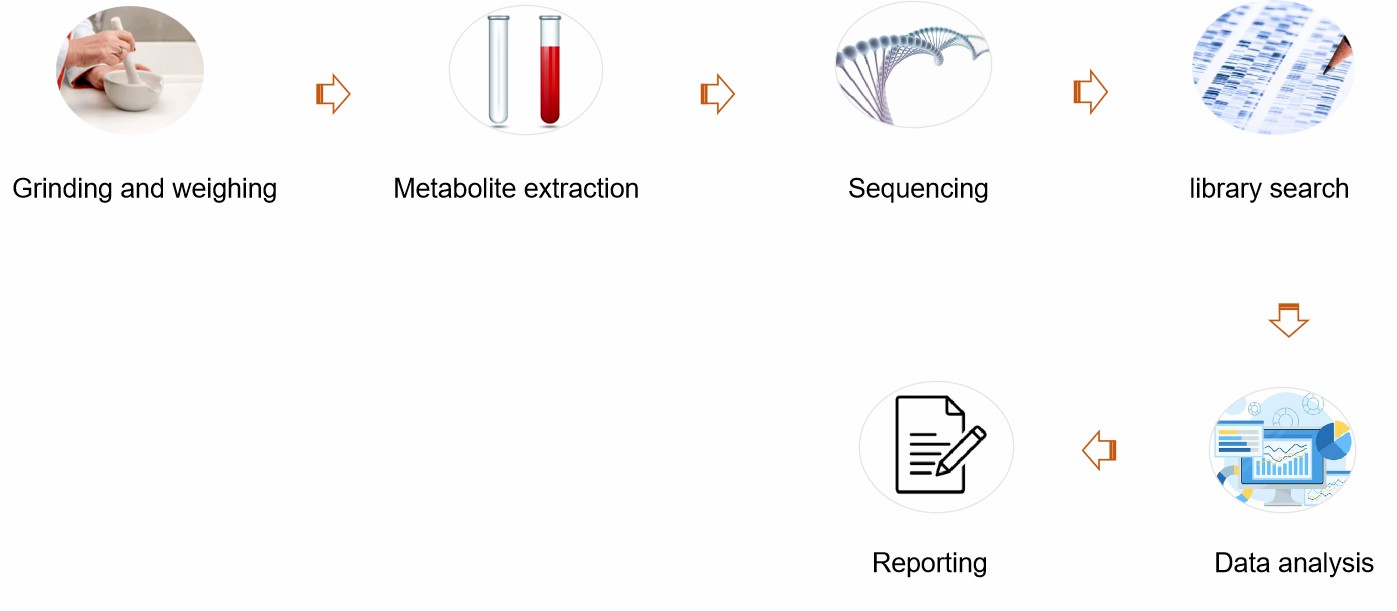Targeted Metabolomics of Anthocyanidins
Anthocyanidins are a class of water-soluble pigments widely found in plants and are the main color-presenting substances in plants. Free anthocyanins are rare under natural conditions and exist mainly in the form of glycosides. There are 6 types of anthocyanins commonly found in plants, namely geranium pigments, cornflower pigments, crocetin, peony pigments, petunia pigments, and mallow pigments and their derivatives.
Lifeasible offers a targeted anthocyanin assay for absolute quantification of anthocyanins. We have established a library of targeted anthocyanins to detect 108 anthocyanins and their pathway substances, including geranins, cornflower pigments, paeoniflorin, mallow pigments, delphinidin, petunidin, proanthocyanidins, and flavonoids.

Significance of anthocyanin research
Anthocyanins are of substantial significance in plant research and play various roles in plant physiological functions and adaptations.
- Pigments and flower color formation. Anthocyanins are essential pigments that give plant flowers their rich colors. By studying the mechanisms of synthesis, regulation, and accumulation of anthocyanins in flowers, it is possible to gain insight into the molecular basis of flower color formation.
- Antioxidant protection. Anthocyanins function as significant components of antioxidants in plants, often subjected to oxidative stress in the environment. They neutralize free radicals, protect cells from oxidative damage, and maintain plant growth and development.
- Photosynthesis and photoprotection. Anthocyanins act as photosynthetic pigments and photoprotectors in plant leaves. They absorb light energy at specific wavelengths and deliver it to the photosynthesis system to facilitate photosynthesis. At the same time, anthocyanins can help plants regulate light overexposure and reduce light energy damage.
- Plant Resistance and Adaptation. Anthocyanins are critical in plant resistance and adaptation to various environmental adversities. They regulate plant responses to stress conditions such as drought, high temperature, low temperature, and salt stress. By studying the functions and regulatory mechanisms of anthocyanins, the molecular mechanisms of plant adaptation to adversity can be revealed. This will provide a valuable theoretical and practical basis for improving crop varieties.
We offer a database of detectable anthocyanins
| Anthocyanins database V2.0 (108) |
| NO. |
Compounds |
Class |
CAS NO. |
KEGG ID |
Quantification type |
| 1 |
Petunidin-3,5-O-diglucoside |
Petunian |
- |
- |
Semi quantification |
| 2 |
Petunidin-3-O-glucoside |
Petunian |
6988-81-4 |
C12139 |
Absolute quantification |
| 3 |
Delphinidin |
Delphinidin |
13270-61-6 |
C05908 |
Semi quantification |
| 4 |
Afzelin |
Flavone |
482-39-3 |
C16911 |
Absolute quantification |
| 5 |
Malvidin |
Malvidin |
10463-84-0 |
C08716 |
Semi quantification |
| 6 |
Peonidin |
Peonidin |
- |
C08726 |
Semi quantification |
| 7 |
Cyanidin-3-(6''-caffeylsophoroside)-5-glucoside |
Cyanidin |
- |
- |
Semi quantification |
| 8 |
Cyanidin-3-(6-O-p-caffeoyl)-glucoside |
Cyanidin |
- |
C16369 |
Semi quantification |
| 9 |
Pelargonidin |
Pelargonidin |
7690-51-9 |
C05904 |
Semi quantification |
| 10 |
Procyanidin A1 |
Proanthocyanidins |
103883-03-0 |
- |
Absolute quantification |
| ...... |
...... |
...... |
...... |
...... |
...... |
Applied directions
- Research on the mechanism of flower and fruit coloration in horticultural plants.
- Research on plant stress resistance (drought resistance, antioxidant, UV resistance).
- Food nutrition (anti-cancer, anti-inflammatory, antibacterial) research.
- Research on biosynthesis regulation mechanism.
- Research on plant growth and development mechanism.
Advantages of our technology
- Precise quantification. External standard quantification, standard curve linearity of 0.99 or more.
- Wide database. Covering 108 anthocyanins and their pathway substances, including geraniol, cornflower paeoniflorin, mallow pigment, delphinidin, petunia, proanthocyanidins, and flavonoids.
- High sensitivity. Using advanced LC-MS/MS platform, the sensitivity can reach ng/mL level.
- Advanced mass spectrometry platform. High-resolution mass spectrometry platform QE or HFX.
- Strict Quality Control. We strictly control the quality to ensure the accuracy of data results.
Sample requirements
| Sample type |
Plant tissue, liquid type (juice/pulp, etc.). |
| Biological replicates |
6-10 biological replicates are recommended. |
| Sample requirement |
Plant tissue ≥ 200 mg, liquid ≥ 0.5 ml; please contact us for details. |
| Sample preparation |
The basic principles of sample preparation include representativeness, rapidity, distribution, contamination control, and low temperature. |
| Storage and transportation |
The samples can be frozen with liquid nitrogen and stored at -80 degrees Celsius or sent by dry ice directly. |
Our technology routes

Lifeasible is an industry leader in the field of plant-targeted metabolism. Based on our years of service experience and advanced technology platforms, we aim to provide high-quality testing services to our clients. If you are interested in us, please feel free to contact us.
For research or industrial raw materials, not for personal medical use!

